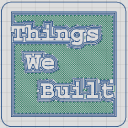Looping You In: Timing and Task Management in Robotic Choreography
Mastering Robot Software Structure for Beginners
Navigating the intricate world of robot programming can be a daunting journey, especially when deciding how to structure your code for feedback, control, and update rates. Here, we dive into the essentials, blending expert advice with practical experiences to guide beginners through the complexities of robot software architecture.
Understanding Update Rates and Task Scheduling
Update Rate Considerations:
- Sensors: Typical sensors update at 10-30Hz, which translates to data every 33-100ms. The update rate you choose should consider the speed of your robot and the precision required for tasks.
- Motion Control: For anything involving motor pulses, encoders, or IMUs, a higher frequency is preferable. Starting at 50Hz and aiming for faster rates as your robot’s speed increases is a solid strategy.
- Human Perception: The average person can detect around 150ms of lag, while only the most adept drone pilots might notice a delay as short as 50ms. This suggests that RC control systems don’t always require frequencies as high as 50Hz, though minimizing lag is always beneficial.
Code Structure and Scheduling:
- Sequential Execution: Starting with a “megaloop” where every function is called every loop is common but beware of not including timeouts, which can lead to issues if a sensor or joystick becomes intermittent.
- Timer-Based System: Moving towards a timer-based system allows for tasks to be triggered according to a schedule, with timeouts placed in crucial areas. This approach helps maintain loop time consistency, especially important when dealing with unreliable sensor connections.
- Event-Driven Tasks: Initiating tasks based on new data arrivals, like a fresh camera frame or sensor reading, can optimize the responsiveness and efficiency of your robot.
Real-World Insights and Strategies
From personal experience, transitioning from a simple megaloop to a more sophisticated timer-based scheduling system has marked a significant evolution in robot programming. This method not only addresses the need for regular task execution but also caters to the variable nature of task priorities and hardware limitations.
Practical Advice:
- Monitor Loop Time: Particularly on platforms like the Raspberry Pi, where OS tasks can impact loop times, keeping an eye on your loop’s execution time is crucial. This ensures that high-priority tasks are not delayed by the OS’s background activities.
- Leverage Microcontrollers: For tasks requiring high frequency and predictability, employing a microcontroller can offer faster and more consistent execution times than a general-purpose computer like the Raspberry Pi.
- Task Prioritization: Consider how far your robot might travel between updates. A robot moving at 1m/s could travel 100mm in 100ms, which impacts how you prioritize and schedule tasks based on their need for speed and precision.
Final Thoughts
Structuring your robot’s software is an art that balances the need for speed, precision, and reliability. By considering the unique requirements of your robot’s tasks, from sensor data processing to motion control, and employing strategic scheduling and prioritization, you can create a robust system capable of navigating the complexities of the robotics world.
Whether you’re a beginner or moving towards more advanced projects, remember: the journey through robotics programming is a continuous learning path, with each challenge offering an opportunity to refine and improve your skills and your robot’s performance.


